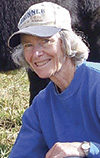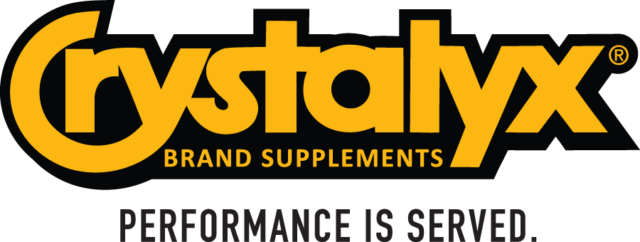She may continue to lie there rather than get up to lick the calf, or walk away ignoring it, or kick the calf when it tries to suck. Some heifers attack the calf.
If you had to pull a heifer’s calf, this may disrupt the normal bonding process. If you take a newborn calf to warm and dry him before his mother has a chance to lick him, this may disrupt bonding. A heifer or cow may be indifferent following a difficult birth or C-section; pain responses can hinder maternal hormones.
Dr. Joseph Stookey, Western College of Veterinary Medicine, Saskatchewan, says the bonding process – as the cow recognizes her calf and commits to caring for it – is a complex blend of hormonal-induced and learned behavior.
Hormones initiate and drive most of what we perceive as maternal behavior. “Some cows become receptive up to a week before they calve and become interested in any newborn. Their hormone pump is already primed; those hormones are reaching a level that makes the cow receptive to any new calf, even if it’s not hers,” he says.
“At the other end of the spectrum are cows that don’t have proper hormone levels and don’t want their calf. We see this most often in first-calf heifers, or in some of the females we assist or deliver by C-section.
If it’s a rodeo getting them in for assistance, or they undergo too much trauma, you can expect them to be less interested in the newborn. There may be other hormones overriding the system due to stress, pain and perhaps the drugs used during a C-section,” says Stookey.
Tips to encourage bonding
At one point Stookey managed the sheep unit at a research station (University of Illinois). “One year, we lambed out 300 Texas ewes that were range-raised and wild. There were some that needed assistance.
You’d corner the ewe, lay her down and pull the lamb – but when you let her up, she’d take off and run over the hill and never look back.
 “We learned that if you smear birth fluids over the muzzle, into the mouth and across the tongue, those ewes – even if they ran off – would start licking their lips, and this would jump-start the hormonal process; they’d come back looking for the lamb.
“We learned that if you smear birth fluids over the muzzle, into the mouth and across the tongue, those ewes – even if they ran off – would start licking their lips, and this would jump-start the hormonal process; they’d come back looking for the lamb.
I do this with cattle when we have to do C-sections or handle dystocia. Before you let the cow out of the headcatch or get her up, drag some birth fluids across the muzzle and into her mouth,” he says.
“The birth fluids are a turn-on. If the cow can start licking the calf, she will generally mother it. If she’s slow to lick her calf, some people pour feed over it to get her to sniff and lick and taste the fluids.”
Usually after the calf has suckled the first time, the hormones of motherhood kick in, but heifers that reject their calves need to be restrained for nursing sessions for even days or weeks before they accept the calf.
It helps to keep the pair in a pen and have the cow/heifer hobbled so she can’t kick the calf, or in separate pens for a few days, supervising nursing to keep her from running off or butting the calf.
 Feed the heifer at nursing time so she will be interested in eating rather than trying to avoid the calf, and he won’t be kicked because she is hobbled.
Feed the heifer at nursing time so she will be interested in eating rather than trying to avoid the calf, and he won’t be kicked because she is hobbled.
Buddy Westphal of Valley View Charolais Ranch, Polson, Montana, has had many years’ experience dealing with the occasional problem heifer. He says there are always a few heifers (and cows) that don’t accept a calf at first because the hormones don’t “kick in” when they are supposed to.
“Sometimes the optimum window for bonding goes past if the calf was born weak or a little premature – and needs medical attention and you take it away. She may not accept it when you bring it back,” he says.
If a heifer is not interested in her calf or won’t let it suckle, he assists. “For the past 20 years, we’ve used a combination of a little tranquilizer for the heifer and some powder sprinkled on the calf to entice the heifer to lick it.
We use the O-No-Mo (Orphan-No-More) that smells terrible. You dampen the calf with a damp towel (if it’s already dry), sprinkling the powder on and massaging it into the hair. We also take a handful and smear it on the cow’s nose. It has a salty tang, and the cow wants to lick it off the calf,” he says.
“To make sure she won’t kick the calf, I give her a tiny dose of tranquilizer, which must be prescribed by a veterinarian. Only a partial dose is needed for the cow to become sleepy.
You figure dosage by size/weight of the cow and her attitude. If she’s mellow, it takes less than if she is excited, with a lot of adrenaline,” he says.
The proper dose makes the cow just sleepy enough that she doesn’t think about kicking. “She’ll let you work in the stall and quietly help the calf nurse without having to put her in a chute. The calf sucking stimulates the proper hormones without getting the cow upset,” he says.
“The combination of the O-No-Mo product and a sedative works well. When the cow ‘wakes up,’ the calf has already nursed (which stimulated oxytocin release in her body), and she’s a mother. With the product on the calf’s back, she wants to lick it.
The calf is happy because it’s had dinner, and the cow is happy because she smells that stuff on the calf and wants to lick it. Giving her oxytocin can also help because it stimulates milk let-down and uterine contractions (to help shrink it), which stimulates the cow’s own production of oxytocin,” he says.
“For many years, I suckled calves with the dam in a chute so the calf wouldn’t get kicked. After I learned to use a tranquilizer instead of having to restrain the cow, it was a lot easier.
You can do this in a barn stall and leave the pair together, right where the calf learned to suck. That’s much better than letting the cow run out of a chute.”
Most heifers accept the calf after the first nursing, but a few still try to kick it and may need hobbles for a few days. “With some that are a little slow to accept the calf, we run the dog past them, and their protective instinct kicks in,” says Westphal.
“Another test to make sure she is mothering that calf is to move the pair from one place in the barn to another – to see if the cow is looking back and saying ‘Come on, baby.’ If she’s keeping track of the calf, you know they are bonded. If she just marches off and isn’t worried about that calf at all, she’s not ready yet.” ![]()
PHOTO 1: Assisting the first nursing in a stall, without the cow restrained.
PHOTO 2: When the heifer gets up, she wants to smell and lick the calf.
PHOTO 3: Assisting the first nursing, with the heifer in a headcatch and a leg tied back so she can’t kick the calf. Photos by Heather Smith Thomas.

-
Heather Smith Thomas
- Freelance Writer
- Salmon, Idaho
- Email Heather Smith Thomas









